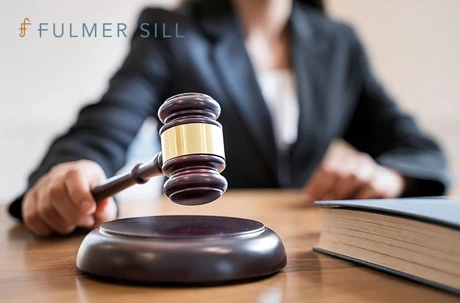|
|
Last Modified on Oct 21, 2020
Many of our personal injury lawsuits settle without the need for litigation. Should your case require the filing of a lawsuit against the at-fault party(-ies), Fulmer Sill stands ready to guide you through the litigation process.
To help ease your mind and provide you with a better understanding of how the litigation process works, we wanted to walk you through the primary steps of litigating a personal injury case:
Pre-trial process
- Petition/Complaint and Service of Process – As your attorneys, we will initiate your personal injury lawsuit by filing a Petition with the appropriate Oklahoma District Court (or a Complaint if filing in a Federal District Court). The Petition/Complaint sets forth your factual and legal allegations against the at-fault party(-ies) who caused your injuries and damages. This typically includes a recitation of how the injury-causing event happened, what injuries you suffered, how you were damaged, etc. Once the Petition/Complaint is filed, it will then be served on the defendant(s) by a process server or by certified mail.
- Answer – Once served, the defendant (or his/her/their attorney) has a set period of time to file an Answer with the Court – which is, in essence, the defendant confirming or denying all of the allegations set out in your Petition/Complaint.
- Discovery – This phase of litigation is often the longest and most time-consuming aspect of litigation, but is also vital to preparing your case for mediation, as well as trial. There are numerous forms of “discovery” available to the parties, but the most common are (A) Interrogatories and Requests for Production of Documents – written questions and requests issued to another party to gather further information and evidence about your case and the defendant’s defenses – and (B) Depositions – the taking and recording of testimony of a witness or party, under oath, by a court reporter.
- Motions – There are a wide array of “motions” that might be filed during the course of litigation, but what type of motion and how many might be filed varies from case to case. In essence, a motion is filed when one or more of the parties needs the Court to resolve an evidentiary or legal issue relative to the case. For example, if a defendant refuses to answer an Interrogatory about how he/she believes the wreck occurred, the plaintiff can file a motion asking the Court to enter an order requiring the defendant to answer the Interrogatory.
Mediation
Before a case proceeds to trial, the parties have an opportunity to participate in a mediation or a judicial settlement conference. A mediation is conducted by a neutral mediator who was chosen and agreed to by all parties. A judicial settlement conference, on the other hand, is conducted by a judge (other than the one handling the case) who takes on the role of mediator for purposes of the settlement conference. In either scenario, each party will attend the mediation with their attorney, and the person serving as the mediator will attempt to facilitate a settlement or resolution of all claims at issue in the case.
Trial
If your personal injury case goes to trial, you can expect it to proceed as follows:
- Jury Selection – The selection of the members of the community who will serve on the jury for your case is the first part of a jury trial. The juror selection process varies between State and Federal courts, but at the basic level, potential jurors are asked a series of questions by each party’s attorney and/or by the presiding Judge. The goal of this process for all parties is to identify jurors who can be fair and impartial with respect to the case, as well as to identify those potential jurors who may be unfair and biased.
- Opening Statements – Each party’s attorney will have an opportunity to make an opening statement to the jury. It provides the jury with each party’s theory or story of the case, as well as what each side believes the evidence will show. We think of opening statements as our opportunity to tell the jury who you are, what happened to you, how you have been hurt and damaged by the defendant’s conduct.
- Presentation of Evidence – This is the part of the trial process where the jury hears and sees evidence regarding your case. This can include calling witnesses/parties to the stand to testify under oath in front of the jury (e.g., you; the person who injured you), playing a recording of a video deposition taken of a witness/party (e.g., your treating doctor(s) or medical expert(s), and the presentation of exhibits or documents to the jury (e.g., photographs of the wreck).
- Closing Arguments – Attorneys for each party have one more opportunity to address the jury about the facts, evidence, and testimony presented throughout the trial.
- Jury Instruction – The Jury Instructions will be read to the jury by the judge presiding over the case. These instructions inform the jury about the law applicable to the case, what evidence the jury can consider, and what questions the jury must resolve in reaching a decision on the case.
- Jury Deliberation & Verdict – The jury will then retire to the jury room (separate from the courtroom) to begin their confidential deliberation relative to the case. Once the jury reaches a verdict (which can take hours, days, or even weeks) they will notify the Court. The jury will then return to the courtroom and the Judge will announce the verdict reached by the jury.
We Are With You Every Step of the Way
You can count on our team to be your advocate and to do everything we can to achieve the best possible results in your case. Our team will be with you every step of the way during the litigation process, but never hesitate to contact us with any questions or concerns you may have.
If you need legal representation in your personal injury case, contact us today to get started with a free case
evaluation





